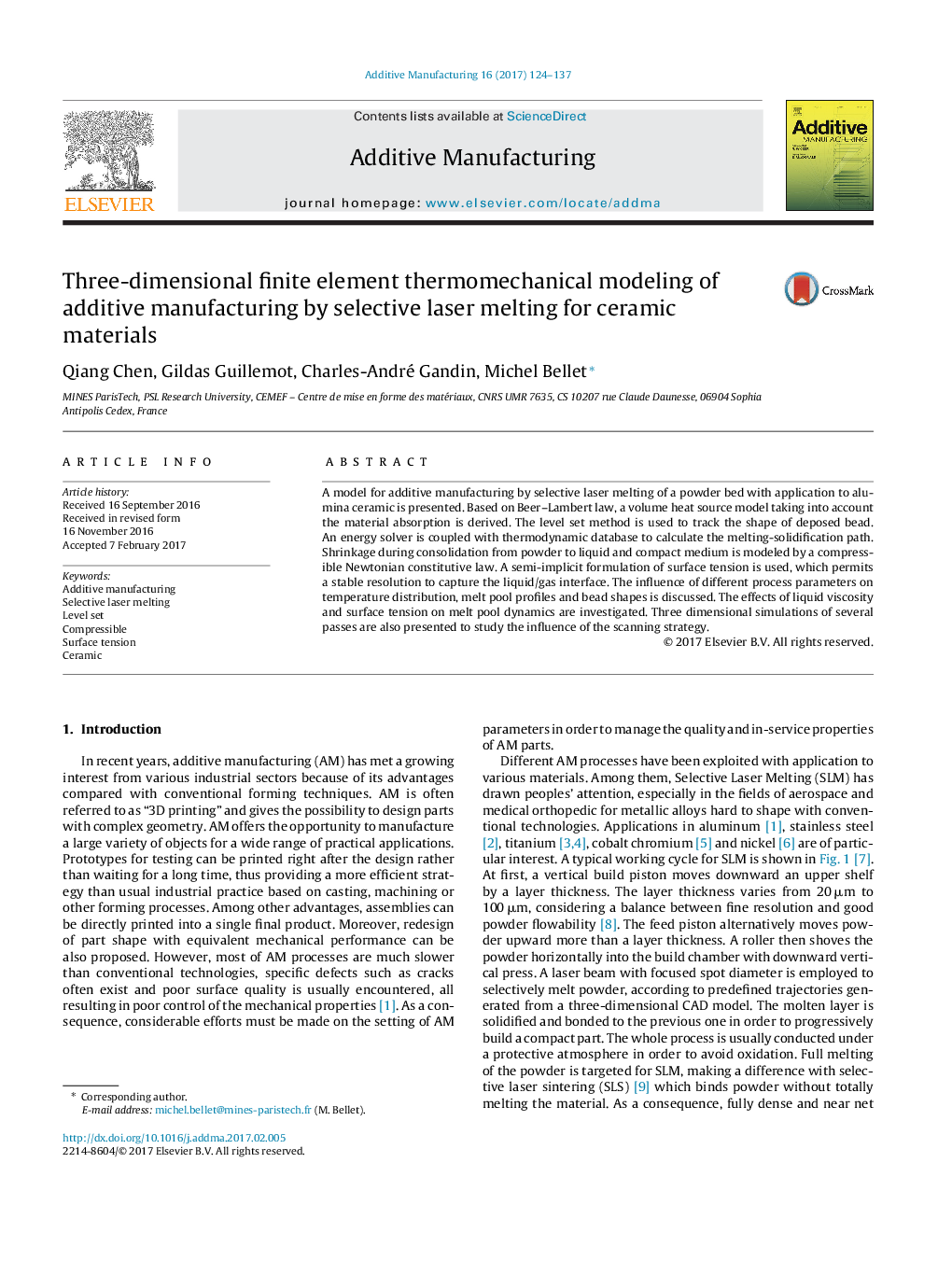| Article ID | Journal | Published Year | Pages | File Type |
|---|---|---|---|---|
| 5020130 | Additive Manufacturing | 2017 | 14 Pages |
Abstract
A model for additive manufacturing by selective laser melting of a powder bed with application to alumina ceramic is presented. Based on Beer-Lambert law, a volume heat source model taking into account the material absorption is derived. The level set method is used to track the shape of deposed bead. An energy solver is coupled with thermodynamic database to calculate the melting-solidification path. Shrinkage during consolidation from powder to liquid and compact medium is modeled by a compressible Newtonian constitutive law. A semi-implicit formulation of surface tension is used, which permits a stable resolution to capture the liquid/gas interface. The influence of different process parameters on temperature distribution, melt pool profiles and bead shapes is discussed. The effects of liquid viscosity and surface tension on melt pool dynamics are investigated. Three dimensional simulations of several passes are also presented to study the influence of the scanning strategy.
Related Topics
Physical Sciences and Engineering
Engineering
Industrial and Manufacturing Engineering
Authors
Qiang Chen, Gildas Guillemot, Charles-André Gandin, Michel Bellet,
